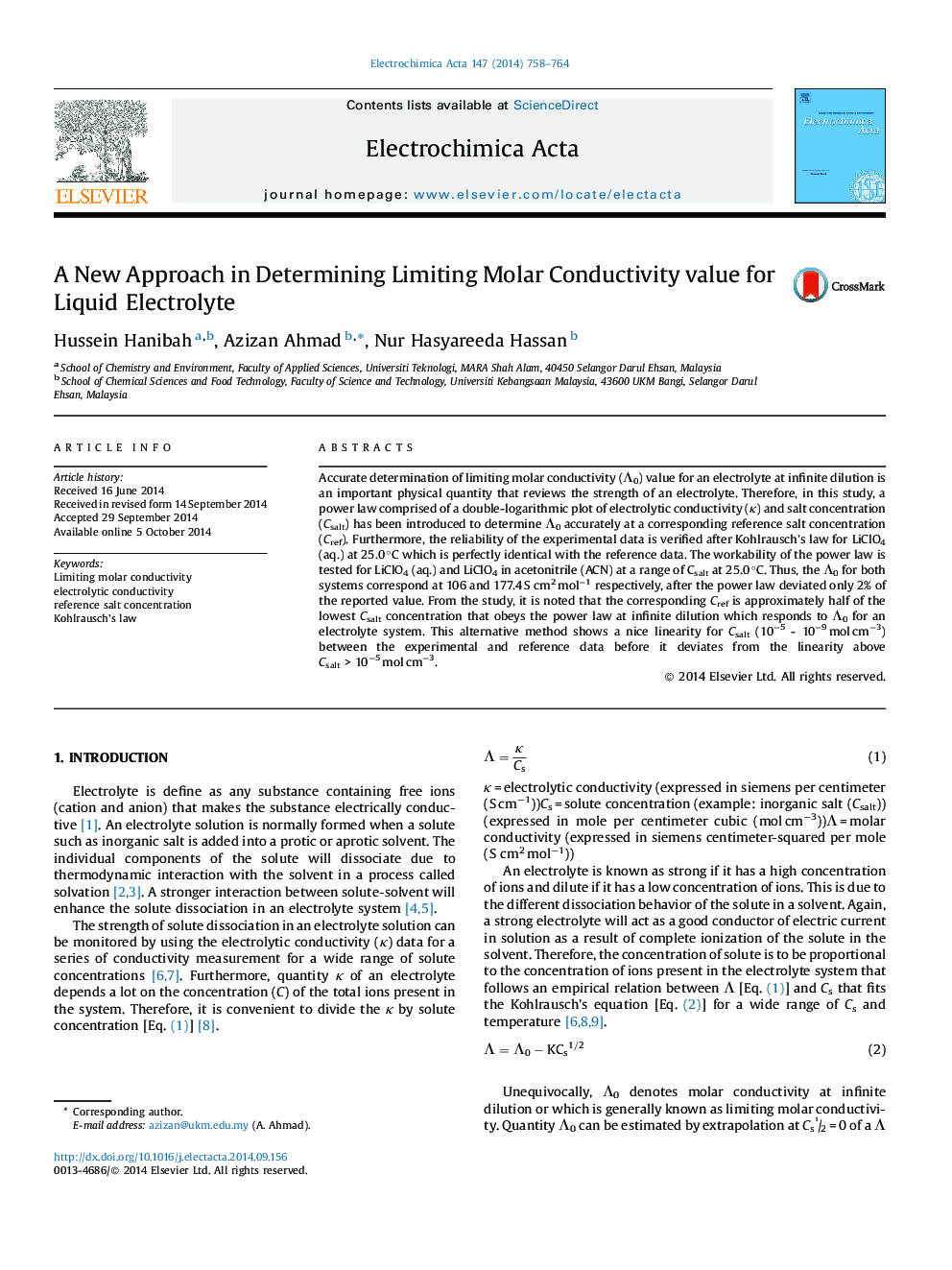| Article ID | Journal | Published Year | Pages | File Type |
|---|---|---|---|---|
| 185124 | Electrochimica Acta | 2014 | 7 Pages |
sAccurate determination of limiting molar conductivity (Λ0) value for an electrolyte at infinite dilution is an important physical quantity that reviews the strength of an electrolyte. Therefore, in this study, a power law comprised of a double-logarithmic plot of electrolytic conductivity (κ) and salt concentration (Csalt) has been introduced to determine Λ0 accurately at a corresponding reference salt concentration (Cref). Furthermore, the reliability of the experimental data is verified after Kohlrausch's law for LiClO4 (aq.) at 25.0 °C which is perfectly identical with the reference data. The workability of the power law is tested for LiClO4 (aq.) and LiClO4 in acetonitrile (ACN) at a range of Csalt at 25.0 °C. Thus, the Λ0 for both systems correspond at 106 and 177.4 S cm2 mol−1 respectively, after the power law deviated only 2% of the reported value. From the study, it is noted that the corresponding Cref is approximately half of the lowest Csalt concentration that obeys the power law at infinite dilution which responds to Λ0 for an electrolyte system. This alternative method shows a nice linearity for Csalt (10−5 - 10−9 mol cm−3) between the experimental and reference data before it deviates from the linearity above Csalt > 10−5 mol cm−3.
